How is it calculated?
What is a customer satisfaction score (CSAT)?
No matter what field your business is in, customer satisfaction is essential. But how can you measure it? With Dialpad AI Contact Centre, you can set up a survey that automatically plays after a customer call and logs your CSAT score. Book a product tour to see how it works!

You've probably heard of CSAT scores, or even seen your competitors advertising theirs as part of their marketing.
In this guide, you'll learn pretty much everything you need to know about CSAT—from how to measure CSAT, to how to continuously improve it over time.
What is a customer satisfaction score (CSAT)?
A CSAT score is basically a number that helps your business measure how satisfied your customers are with your product, service, or company as a whole.
Using this customer satisfaction metric, you can measure how happy customers are with you after a purchase or other specific interaction with your business (like a support phone call).
Done right, it can help you get a better understanding of your customer journey and where you can focus on making improvements.
CSAT scores are often generated using data from customer feedback surveys. A typical example of this is when a customer interacts with your company, they are sent a brief survey asking them to rate their satisfaction level.
For a customer satisfaction survey like this, the customer might receive a survey question like, “How satisfied are you with your experience today?” and be asked to rate their satisfaction on a rating scale of 1 to 10, with 10 being “very satisfied” and 1 being “not satisfied at all.”
For example, in Dialpad's contact centre platform, there's a CSAT feature built in—you can create a survey in just a few seconds and have it play automatically after customer calls:
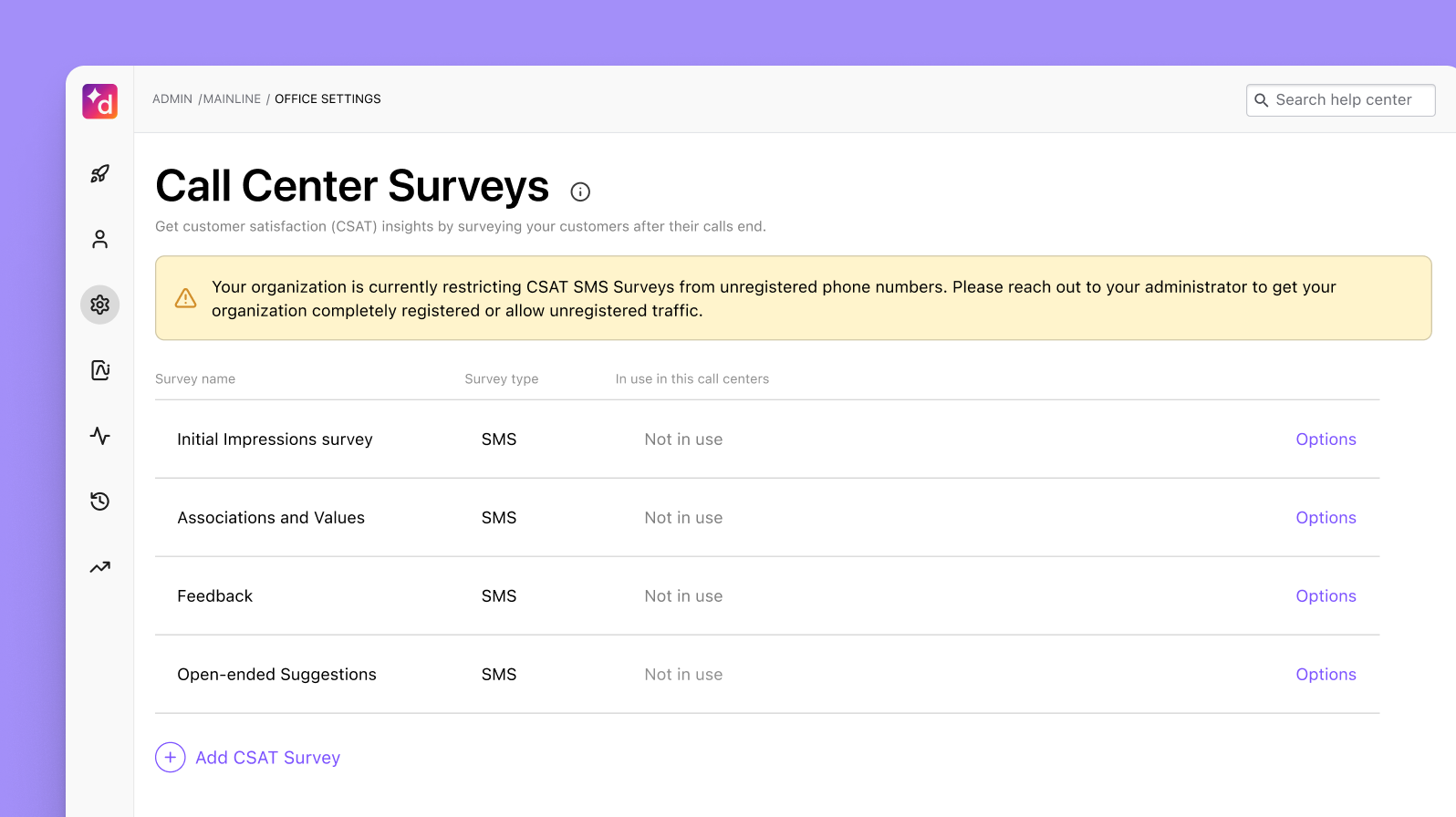
How do you calculate a customer satisfaction score?
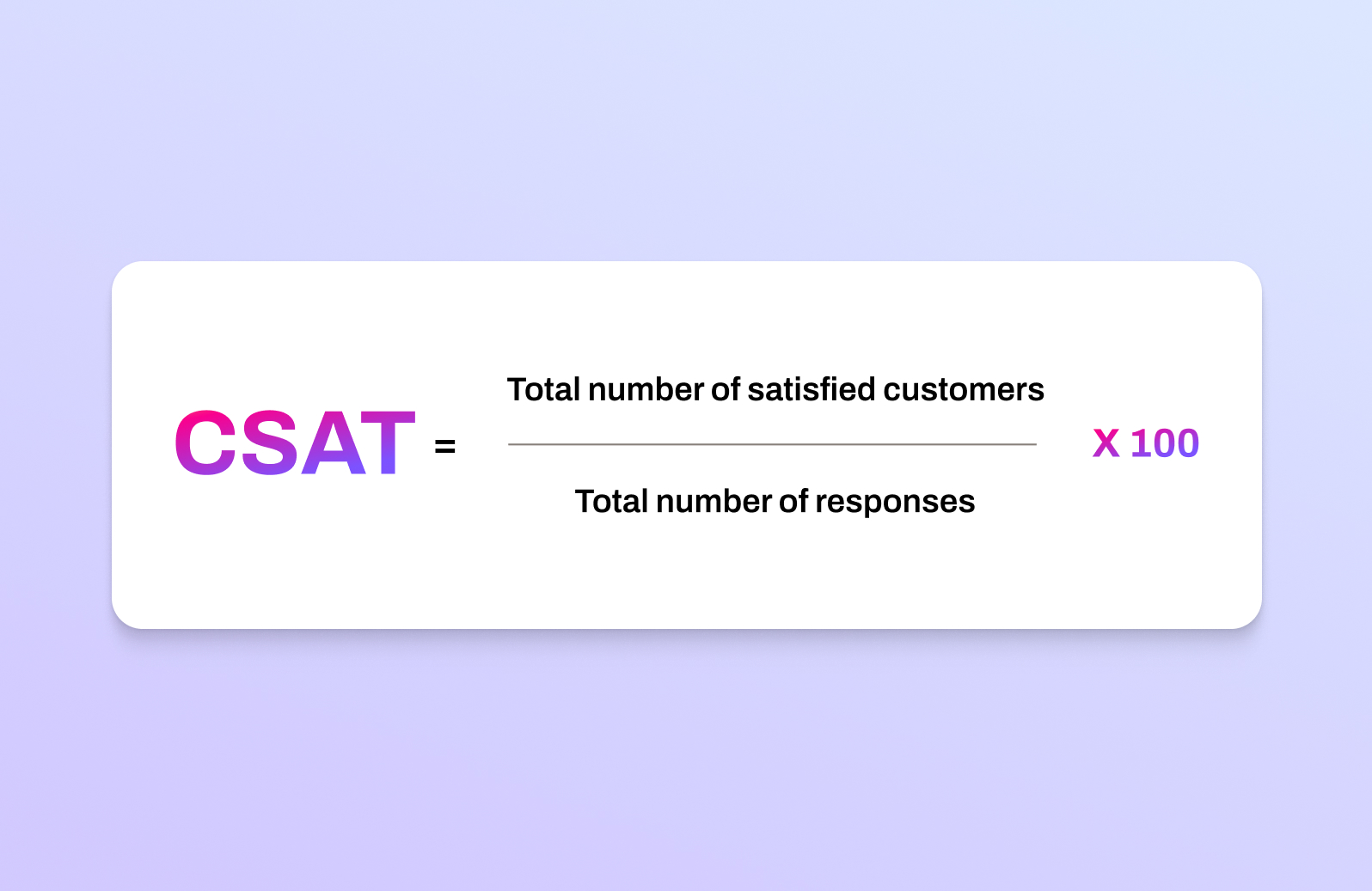
Using customer satisfaction surveys, your business can collect a range of ratings from customers and then convert all of these results into a CSAT score.
CSAT scores range from 0 to 100. A CSAT score based on a CSAT survey would usually be calculated by dividing the total number of customers who gave a positive rating, such as a 4 or 5 on a scale of 1 to 5, by the total number of responses to the survey, and then multiplying this by 100.
For example, if 2,000 people completed your CSAT survey and 1,800 of them gave a positive rating of 4 or 5, the CSAT score would be 90% (1,800 positive responses / 2,000 total responses x 100 = 90).
✨ UPLEVEL YOUR CONTACT CENTRE
Grab the Contact Centre Playbook, which breaks down everything you need to know, from setup to improving customer satisfaction—with examples from real contact centre teams across different industries.
What makes a good customer satisfaction score?
Your target CSAT score will depend on your industry. That said, a good CSAT score is typically between 75 and 85%. The UK Customer Satisfaction Index (UKCSI) calculates CSAT score benchmarks for each industry.
Leisure: 81.7
Leisure is a pretty broad category, with the UKCSI including everything from Amazon Prime Video, JD Wetherspoons, and your local independent coffee shop! When customers are looking for enjoyment, their expectations are likely to be high, and not meeting them can impact a brand’s reputation. Take a leaf out of Greggs’ book, who seem to have nailed it with their score of 84.3.
Retail (Non-food): 81.5
Coming in just behind leisure is the ‘non-food’ retail category. Clothing stores like Primark, DIY stores like B&Q, and specialist shops like Specsavers all fall in this category. Most customers visiting these stores will have particular needs, and thus, expect those needs to be met.
Retail (Food): 81.0
Unsurprisingly, it’s another retail category—this time, food. This includes all your big supermarkets, like Tesco and Aldi. M&S Food excels in this area, with excellent customer service, a good range of ethical products, and some excellent deals.
And, at the bottom of the list…
Public Services (Local): 73.4
This took a real hit due to dissatisfaction with local GPs and healthcare services—difficulties adapting to remote care, staffing shortages and a high-stress environment almost certainly contributed to this.
Biggest change?
In January 2021, UKCSI’s top 50 was half made up of retail and leisure. However, in January 2022, this has shifted to be around a third. Many companies from the Insurance, Banks and Building Societies, and Telecommunications and Media sectors have made it in instead. The main reason? Excelling in three key areas: complaint handling, speed of service, and providing reassurance.
One of the biggest challenges of CSAT: Responsiveness of potential respondents
Calculating accurate CSAT scores relies on customer feedback. And first things first: They have to give you that feedback!
One of the biggest challenges that many of our customers (no matter what industries they're in) have seen is low response rates—not everyone will bother answering your survey, no matter how short it is, after a purchase or interaction.
In order for CSAT scores to be useful to you, you need enough of them, and they need to be accurate. What that means: The more CSAT scores you can collect, the better.
Another issue is that unhappy customers might be more likely to respond to your survey than satisfied customers, which deceptively lowers your overall score. Encouraging all your customers to respond to surveys after an interaction will not only increase your CSAT response rates, but also make them more representative of how your customers feel overall. (Not just the angry ones!) One way to do this is to provide a reward—for instance, a 10% code on completion of the survey (regardless of score).
How predictive CSAT can help
Okay, so we know that encouraging customers to respond to feedback surveys is often difficult.
But what if there were a way, say for an AI model, to predict customer satisfaction using speech transcription technology?
If AI can identify keywords and phrases during customer interactions to analyse customer sentiment, it's not that far of a leap to get it to predict or estimate a CSAT score based on that conversation... Right?
This would be huge, since it solves the issue of customer surveys not getting enough responses. Here are a few other benefits of a predictive CSAT feature like this:
It can help agents and supervisors be more proactive: If you can see CSAT metrics in real time instead of after the fact, how might that improve your processes? This is a significant shift that very few companies are using—or even aware of—right now. But by shifting your CSAT metrics away from post-call customer surveys and towards AI-powered, real-time results, your agents can become more proactive—before customers get mad.
It gives you more comprehensive results: We mentioned that having a larger sample size (basically more responses) gives you CSAT scores that are more well-rounded, because you're not just getting survey feedback from the customers who are angry. With predictive CSAT scores that are more representative, it can reduce the chances of execs and C Suite teams having knee-jerk responses to scores that look bad, but are in reality, a bit skewed.
Dialpad's industry-first AI CSAT feature is designed to solve exactly that. Not only can our AI transcribe calls and analyze sentiment in real time, it can also infer CSAT scores for 100% of your customer calls thanks to its hyper-accurate transcription feature. The result? A much more representative sample size for CSAT scores, and a more accurate understanding of how satisfied your customers really are:
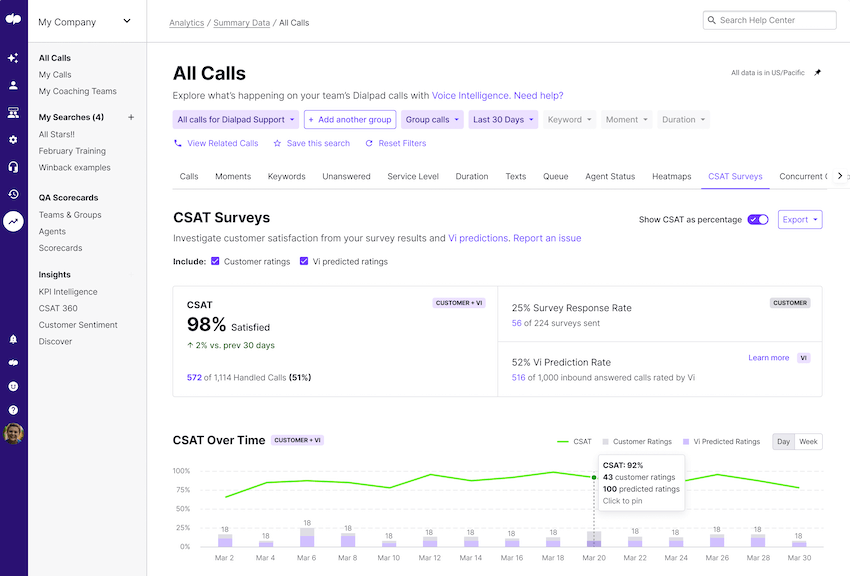
Difficulty determining training needs
Low CSAT survey response rates can create problems in your contact centre too. CSAT metrics are a great way for contact centre managers to identify agents that need additional training or support—and without adequate data, managers may be in the dark about who needs more coaching.
Monitoring business challenges
Monitoring CSAT scores allows your business, managers, and team leaders to monitor customer satisfaction over time. That means if a new product is released or you update your service in any way, you can measure CSAT scores in response. If you don’t have many survey respondents, your CSAT scores might change dramatically over the course of the day, which won't give you a clear overall picture of customer satisfaction.
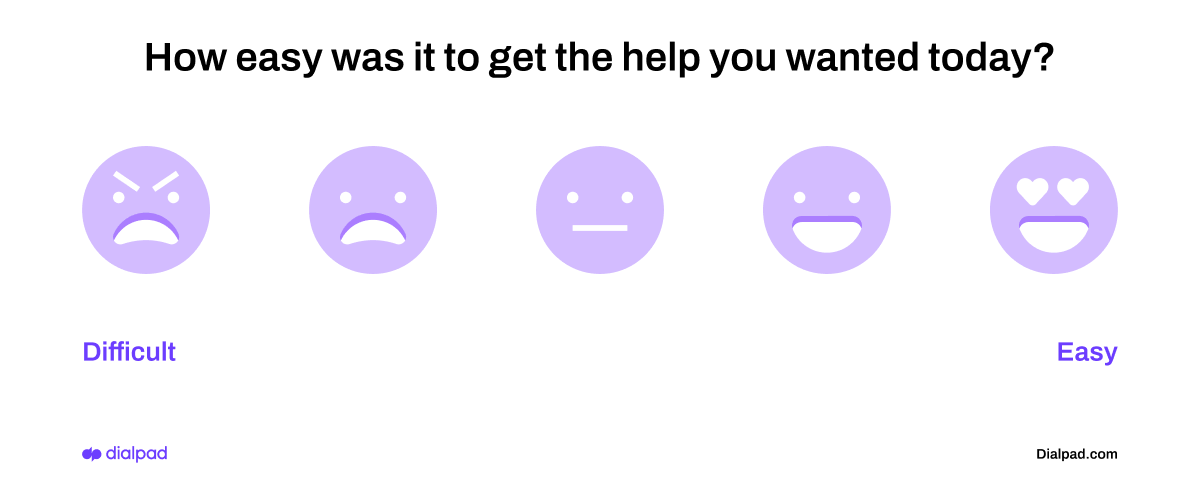
A contact centre platform with built-in CSAT
Book a demo of Dialpad AI Contact Centre to see how it can help you measure customer satisfaction (and improve your CSAT metrics). Or, take a self-guided interactive tour of the app on your own!
When should you survey for customer satisfaction?
There are some key moments when you should survey your customers for CSAT scores. These will help you track satisfaction across the customer journey—while helping you be proactive about increasing customer retention and lowering customer churn.
After customer lifecycle moments
Customer lifecycle moments are the steps your customer takes throughout their interaction with your business. These can often be split into five stages:
Discovery: When a customer first discovers your brand.
Evaluation: When the customer learns about your brand and decides whether or not to purchase.
Purchase: The moment a customer purchases your product or service.
Experience: When the customer experiences and engages with the purchased product.
Retention: When a customer decides to purchase again or remain with your service or if they decide to leave.
Each of these lifecycle moments is a key time to assess how your customers feel. They will help you spot vulnerabilities in the customer journey where you may be losing sales and help you spot your strengths, too.
Moments within your business’s customer lifecycle where you might initiate a customer satisfaction survey might include:
Discovery: Ask customers to rate their experience on your website or with your sales team.
Evaluation: Follow-up with customers after they have spoken with your sales team if they haven’t yet made a purchase and include a customer survey.
Purchase: Send customers a survey immediately after they have purchased a product or after customer onboarding for your service.
Experience: Follow-up with customers after they have had a chance to engage with their purchase.
Retention: Ask customers to complete a customer satisfaction survey six months before renewal date, after they renew, or after they cancel.
6 months before renewal
The last point of the customer lifecycle is retention. Asking a customer to complete a survey after they've already cancelled is too late—although it is still helpful. One of the best times to survey for satisfaction is six months before renewal.
By surveying ahead of renewal, you can spot customers who are unlikely to renew their service. This is the moment for your sales team to step in ahead of time to secure that customer, perhaps with a new renewal deal.
After customer support / education touchpoints
Customer support or education touchpoints often fall outside of the standard customer lifecycle, but they're nonetheless vital moments to measure satisfaction, as they could make or break your customer loyalty.
This is why it’s so common to send customer satisfaction surveys after a customer has spoken with your support team. You may have also seen mini-surveys at the end of knowledge base web pages asking you to rate how helpful the page was. All of these indicate to the business how effective their support and education channels are.
In Dialpad, not only can you easily set up CSAT surveys in your online dashboard, you can also give your customers the option of elaborating on why they gave you a certain score:
Why do you need to measure your customer satisfaction score?
It helps you track how your team is performing on your customer-oriented goals
Effectively tracking how your employees are communicating with customers and fulfilling their needs is essential to any customer-oriented business. With CSAT scores, you can proactively measure customer satisfaction at various interaction points to track how well your teams are performing and spot anyone who needs additional training.
It makes it easier to identify what needs to be improved in your existing customer service strategies
By measuring CSAT at different points in the customer lifecycle, you can pinpoint exactly where you need to improve. This can save time and money as you know exactly where your service can be improved, allowing you to make smarter investments throughout your business.
It uncovers insights on where the product or service falls short of your customers' expectations
If you offer a multi-faceted product or service, it’s likely that customers could be satisfied with one element of the product—but not others. By creating customer surveys that ask people to rate different aspects of your product or service, you can gain valuable insight into your own products from your customers.
Great satisfaction scores will help you stand out from competition
CSAT scores can also be a part of your marketing strategy. By advertising your CSAT scores, you can stand out from your competitors as a company that prides itself on customer satisfaction. Let potential customers know that 95% of your current customers are happy customers, and you’ll be reassuring them of the quality of your service.
It improves customer experience and loyalty
When it comes to improving customer experience and increasing customer loyalty, knowledge is power. More specifically, knowledge about your customers. The more you know about your customers’ levels of satisfaction, and where they're not happy, the better an experience you can provide for them.
Keeping track of your CSAT metrics is essential to helping you pinpoint where you’re succeeding and failing. Only then can you improve!
Speaking of which...
How can you improve your customer satisfaction scores?
Provide training for your team
The employee experience plays a large part in the customer experience, so regular training in customer service is a must for any member of your team that deals with customers. This should start with onboarding and be ongoing throughout their time at your company and, when needed, provided when any individual team member’s CSAT scores are down.
Clearly communicate your goals
It's going to be hard to improve your CSAT scores if your team doesn't know what your goals are. Which CSAT metrics are you measuring? How will you be measuring them? Everyone on your team, from new hires to seasoned agents, should be able to answer those questions.
👉 See how they did it:
Firefly Health's agents are picking up every call—within 40 seconds—while communicating with customers via other channels like social media and SMS. In fact, Kimberly, their Head of Member Experience Operations, pulls metrics multiple times a day. See how she does it here!
Improve your hold time strategy
Putting customers on hold is an inevitable part of any call centre. But no one likes to be put on hold and it can damage your CSAT scores. So, how can you improve your hold time strategy and keep customers happy?
Break up hold times
Agents need time to look up answers or speak to managers about customer queries. There isn’t much you can do to shorten this time beyond giving your agents all the information they need. What your agents can do themselves, however, is break up hold times by checking in with their caller regularly to reassure them that they are working on their query.
Be honest with hold times
While it might be tempting to give customers overly optimistic estimated hold times, it can actually make them more frustrated as they wait for longer than expected. Always be honest about hold times and make the most of hold tools that tell customers where they are in a queue. Dialpad's communications platform lets you give customers the option to request a callback—which can help prevent them getting frustrated since they don't have to wait on hold for an agent to become available.
Automate your processes (where it makes sense to)
Automation is improving many aspects of customer service and helping businesses improve CSAT scores. In contact centres, for example, automation can route calls to the best agent for that customer’s query and trigger customer surveys following a call via SMS, email, or even social media!
You can also speed up resolution time by using a variety of automated tools together, like chatbots, social media, and SMS automated messaging, so that customers can get instant responses to their queries on the channels they prefer.
👉 Further reading:
If your team is on the phone with customers a lot, then call quality is essential. IPM Medical Group, for example, needs to be able to effectively handle and monitor calls, pull up patient information as soon as they call, and monitor calls in real-time for a streamlined customer and employee experience. See how they did it here!
Track other supporting metrics like CES and NPS
CSAT scores measure customer satisfaction, but there are other metrics you might want to track that go hand-in-hand with CSAT scores. Two of these are customer effort scores (CES) and net promoter score (NPS), both of which help you measure overall customer satisfaction and customer lifetime value.
CES measures how much effort a customer has had to exert to complete an activity. This activity is usually how much effort was required for a support request to be fulfilled, but it could also include making a purchase, returning a product, or getting any issue resolved.
NPS measures customer loyalty. The most loyal customers are promoters, those who are loyal to your brand and would act as a referral and recommend you to friends. The least loyal customers are detractors, those who are not satisfied with your company and actively dissuade friends and family from your brand.
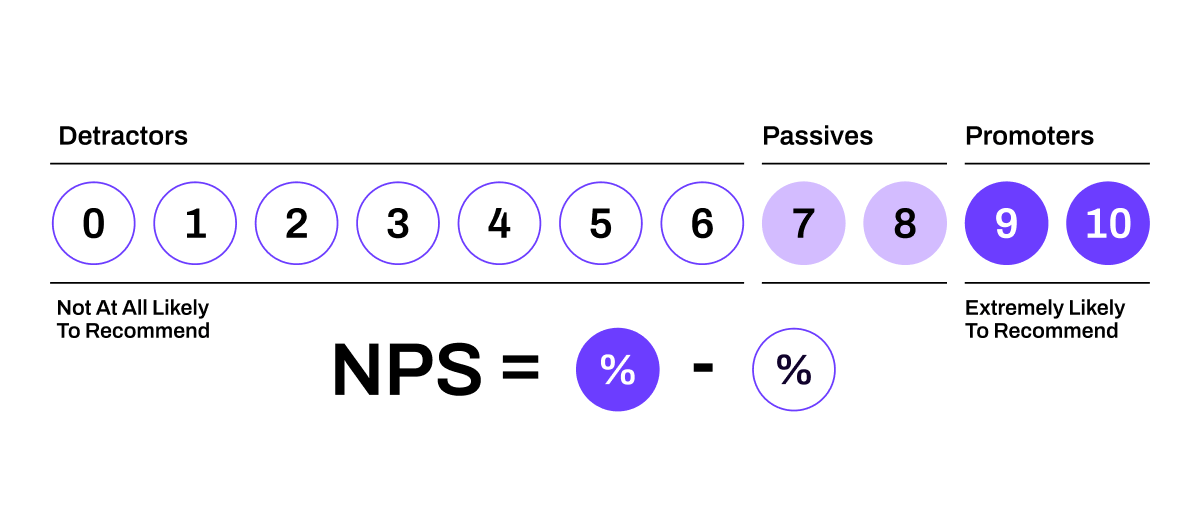
Review your team's performance regularly
Don’t wait for a yearly check of your CSAT score to do this. Instead, make a habit of it. After all, which is easier—catching little slips here and there because you're pulling the numbers every day or every week, or trying to figure out the cause of a huge dip in your CSAT metrics that's been happening over the last six months?
Are you measuring customer satisfaction scores?
CSAT surveys and scores are an opportunity to help your customers feel heard, gain insight into your customer-oriented services, and improve your customer loyalty and retention.
See how Dialpad can help you improve your CSAT scores
From easy CSAT survey creation to AI-powered features that can help you get a more comprehensive view of how your customers are feeling, there's a ton you can do in Dialpad AI Contact Centre. Book a product tour to see how it works!
